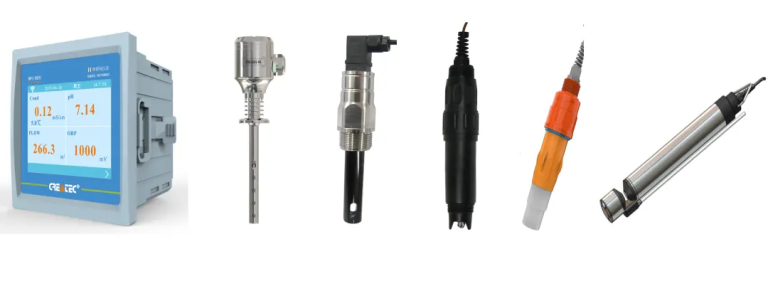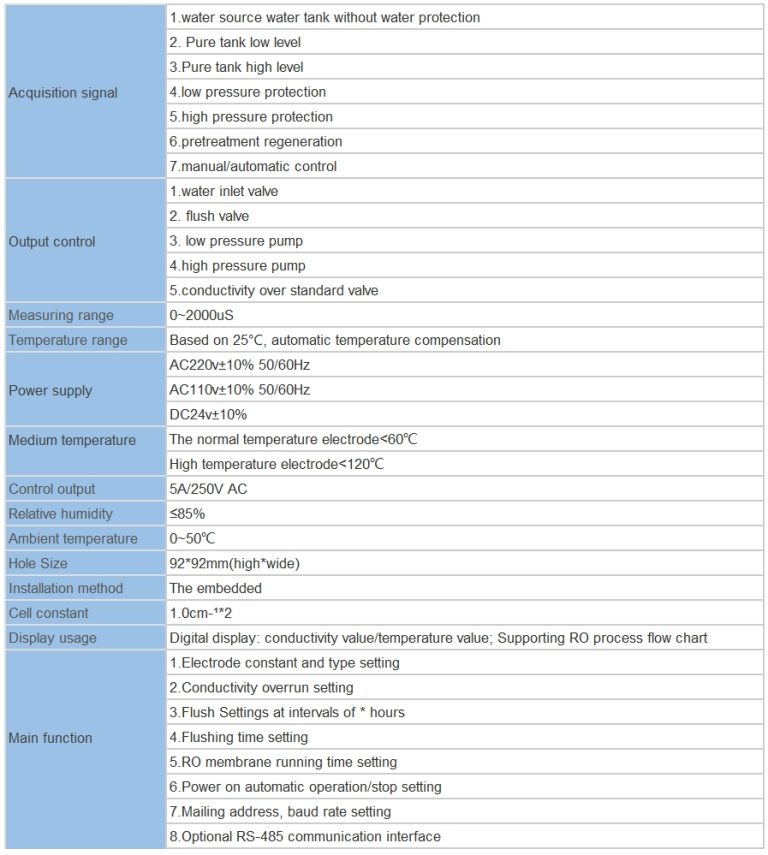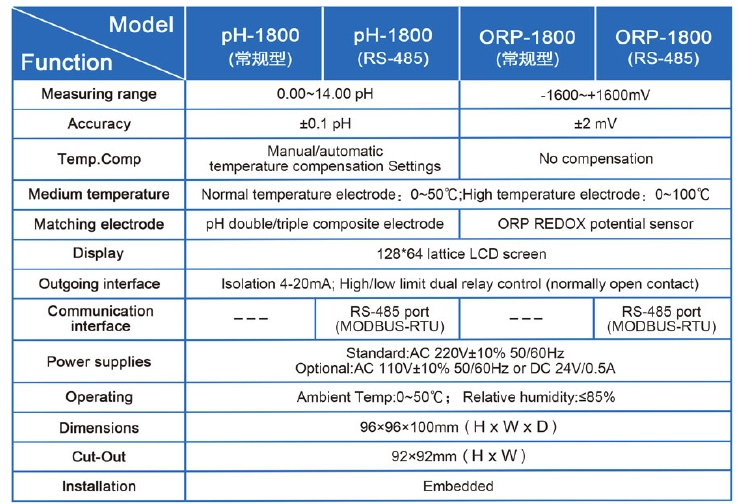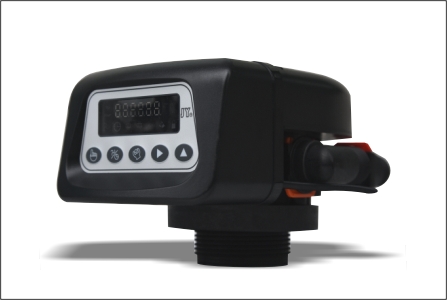Table of Contents
Understanding the Difference Between Free Chlorine and Total Chlorine
Chlorine is a commonly used chemical in water treatment processes to disinfect and kill harmful bacteria and other microorganisms. When chlorine is added to water, it forms different compounds that play a crucial role in ensuring the water is safe for consumption. Two important measurements used to monitor the effectiveness of chlorine in water treatment are free chlorine and total chlorine.
| POP-8300 free chlorine online analyzer | ||
| System Model | POP-8300 free chlorine online analyzer | |
| Measurement configuration | (HClO)free chlorine.. | |
| total free chlorine/(ClO2)/pH/Temperature | ||
| \\u3000 | Free chlorine | (0.00-2.00)mg/L(ppm);\\u00a0\\u00a0 (0.00-20.00)mg/L(ppm) |
| Measurement | pH | 2.00-12.00 |
| range | Temperature | (0.0-99.9)\\u2103 |
| \\u3000 | Free chlorine | 0.01mg/L(ppm) |
| Resolution | pH | 0.01 |
| \\u3000 | Temperature | 0.1\\u2103 |
| \\u3000 | Free chlorine | Indication error 10% |
| Accuracy | pH | 0.1pH |
| \\u3000 | Temperature | \\u00b10.5\\u2103 |
| Sensor life | pH/free chlorine sensor | 12months(The service life is closely related to the measurement medium and maintenance frequency) |
| Communication interface | RS485 | MODBUS RTU communication protocol |
| \\u3000 | Number of channels | Double channels |
| (4-20)mA | Technical feature | Isolated, reversible, completely adjustable, instrument/transmitter dual mode |
| output | Channel configuration | Programmable point to Free chlorine, chlorine dioxide, Temperature, pH |
| \\u3000 | Loop resistance | 400\\u03a9(Max), DC 24V |
| \\u3000 | Transmission accuracy | \\u00b10.1mA |
| \\u3000 | Number of channels | Double channels |
| \\u3000 | Contact mode | The first and second for photoelectric switch |
| Control output | Load capacity | Load current 50mA(Max)\\uff0cAC/DC 30V |
| \\u3000 | Control point | Programmable function(Free chlorine, chlorine dioxide, Temperature, pH, Timing) |
| \\u3000 | Load capacity | Load current 50mA(Max)\\uff0cAC/DC 30V |
| \\u3000 | Control point | Programmable function(Free chlorine, chlorine dioxide, Temperature, pH, Timing) |
| Power supply | Connected to electric supply | |
| \\u3000 | AC80-260V;50/60Hz,compatible with all international | |
| \\u3000 | market power standards(110V;220V;260V;50/60Hz). | |
| Working environment | Temperature:(5-50)\\u2103\\uff1brelative humidity:\\u226485% RH(non condensation) | \\u3000 |
| Power Consumption | \\uff1c20W | |
| Storage environment | Temperature:(-20-70)\\u2103\\uff1brelative humidity:\\u226485%RH(non condensation) | |
| Installation | Wall mounted(with the preset back cover) | |
| Cabinet weight | \\u226410kg | |
| Cabinet dimension | 570*mm*380mm*130mm(H\\u00d7W\\u00d7D) | |
Free chlorine refers to the amount of chlorine that is available to disinfect the water. It is the chlorine that is not bound to any other compounds and is therefore free to react with any contaminants in the water. Free chlorine is typically measured in parts per million (ppm) and is an important indicator of the water’s disinfection capability. It is essential to maintain an adequate level of free chlorine in water to ensure that it is safe for consumption.
Total chlorine, on the other hand, refers to the total amount of chlorine present in the water, including both free chlorine and chlorine that is bound to other compounds. Total chlorine is also measured in parts per million (ppm) and provides a comprehensive view of the overall chlorine levels in the water. By measuring total chlorine, water treatment operators can ensure that the chlorine levels are within the recommended range for effective disinfection.
It is important to note that while free chlorine is the active form of chlorine that is responsible for disinfection, total chlorine provides a more complete picture of the chlorine levels in the water. By monitoring both free chlorine and total chlorine, water treatment operators can ensure that the water is effectively disinfected while also preventing the formation of harmful disinfection byproducts.
In water treatment processes, maintaining the right balance of free chlorine and total chlorine is essential to ensure that the water is safe for consumption. If the free chlorine levels are too low, the water may not be adequately disinfected, putting consumers at risk of waterborne illnesses. On the other hand, if the total chlorine levels are too high, it can lead to the formation of harmful disinfection byproducts that can pose health risks.
To maintain the right balance of free chlorine and total chlorine in water, water treatment operators must regularly monitor and adjust the chlorine levels as needed. By carefully monitoring both free chlorine and total chlorine, operators can ensure that the water is safe for consumption while also minimizing the formation of disinfection byproducts.
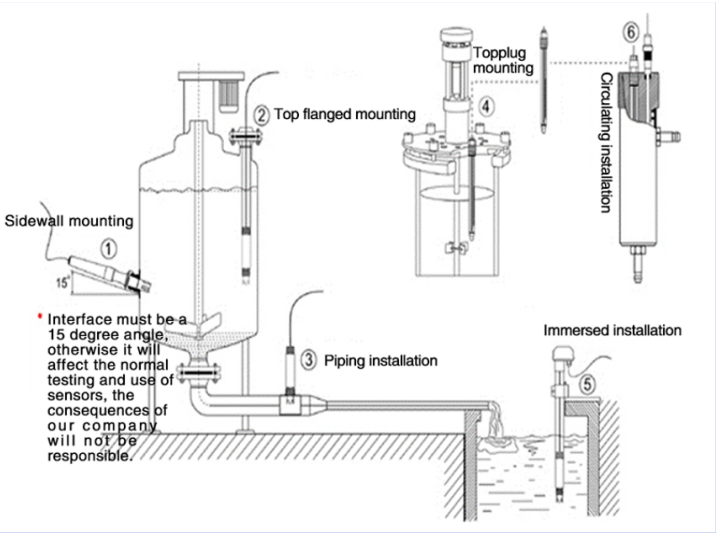
In conclusion, free chlorine and total chlorine are two important measurements used in water treatment processes to monitor the effectiveness of chlorine in disinfecting water. While free chlorine is the active form of chlorine that is responsible for disinfection, total chlorine provides a more comprehensive view of the overall chlorine levels in the water. By understanding the difference between free chlorine and total chlorine and how they each play a unique role in water treatment, operators can ensure that the water is safe for consumption while also minimizing the formation of harmful disinfection byproducts.
The Importance of Monitoring Free Chlorine and Total Chlorine Levels in Water Systems
Chlorine is a commonly used disinfectant in water treatment systems to kill harmful bacteria and pathogens. It is essential for maintaining clean and safe drinking water for the public. When chlorine is added to water, it forms two main types of chlorine compounds: free chlorine and total chlorine. Understanding the differences between these two types of chlorine is crucial for monitoring and maintaining water quality in water systems.
Free chlorine refers to the amount of chlorine that is available to disinfect water. It is the active form of chlorine that is able to kill bacteria and other harmful microorganisms. Free chlorine exists in water as hypochlorous acid (HOCl) and hypochlorite ion (OCl-). These two forms of free chlorine work together to effectively disinfect water and ensure its safety for consumption.
Total chlorine, on the other hand, includes both free chlorine and combined chlorine. Combined chlorine is the chlorine that has already reacted with organic matter or other contaminants in the water. It is no longer available for disinfection purposes and is considered to be less effective in killing bacteria. Monitoring total chlorine levels is important because it provides a complete picture of the chlorine present in the water, including both the active and inactive forms.
Maintaining the proper balance of free chlorine and total chlorine in water systems is crucial for ensuring effective disinfection and preventing the growth of harmful bacteria. If the free chlorine levels are too low, there may not be enough chlorine available to kill bacteria, leading to potential health risks for consumers. On the other hand, if the total chlorine levels are too high, it can result in the formation of disinfection byproducts, which can be harmful to human health.
Regular monitoring of free chlorine and total chlorine levels in water systems is essential for ensuring the safety and quality of drinking water. Water treatment facilities use various methods to measure chlorine levels, including colorimetric test kits, electronic sensors, and titration methods. These monitoring techniques help water operators to adjust chlorine dosages as needed to maintain the proper balance of free chlorine and total chlorine in the water.
In addition to monitoring chlorine levels, water treatment facilities must also consider factors that can affect chlorine effectiveness, such as pH levels, temperature, and the presence of organic matter in the water. These factors can impact the stability and reactivity of chlorine compounds, ultimately affecting their ability to disinfect water effectively.
Overall, monitoring free chlorine and total chlorine levels in water systems is essential for ensuring the safety and quality of drinking water. By maintaining the proper balance of chlorine compounds and regularly monitoring chlorine levels, water treatment facilities can effectively disinfect water and protect public health. It is important for water operators to stay informed about the latest monitoring techniques and best practices for chlorine disinfection to ensure the continued safety of our drinking water supply.


